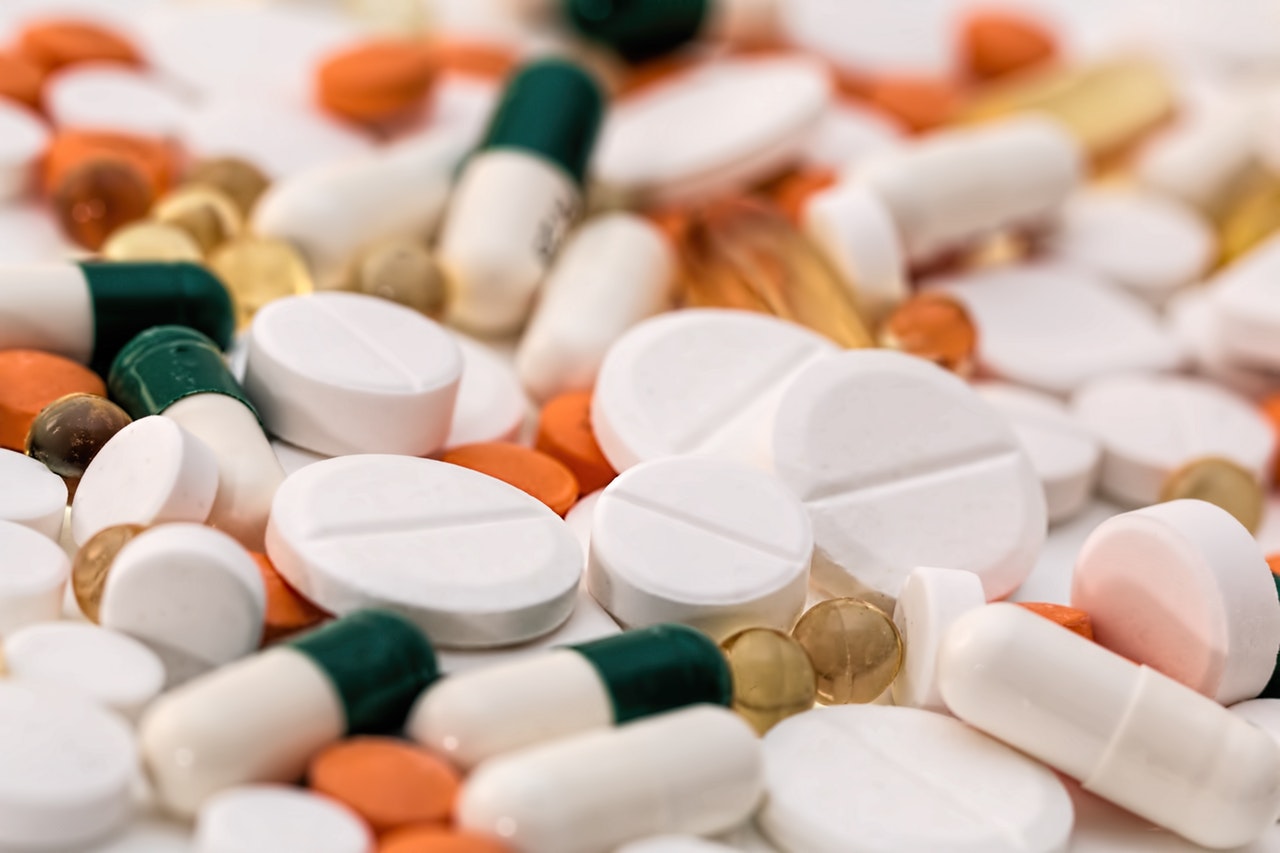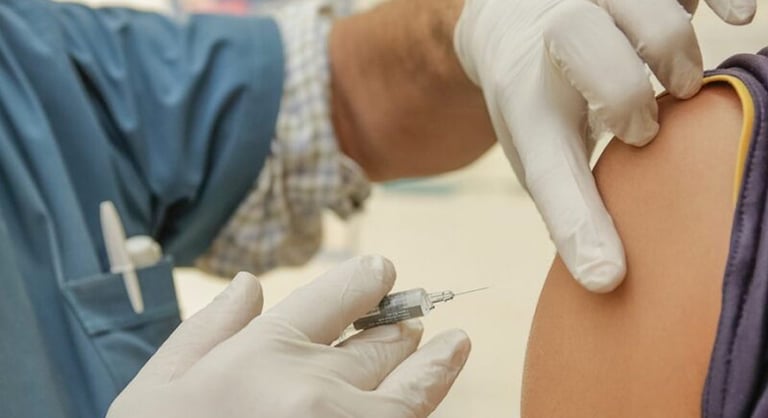AstraZeneca plc (LON:AZN) has today announced its full year and Q4 2019 results.
AstraZeneca delivered a year of strong revenue growth, supported by the launch of new medicines1 and further good progress on its pipeline, with several approvals and data readouts. These trends are set to continue in 2020, accompanied by growth in earnings and cash. In maintaining its focus on patients and science, the Company remains on track to deliver its strategic ambitions.
Full-year Product Sales growth of 12% (15% at CER2) to $23,565m included fourth-quarter Product Sales of $6,250m (+8%, +9% at CER). All three therapy areas and every sales region grew at CER in the quarter and over the full year. Highlights for the year included:
– Sales of new medicines increased by 59% (62% at CER) to $9,906m, including new-medicine growth in Emerging Markets of 75% (84% at CER) to $1,865m. New medicines represented 42% of total Product Sales (FY 2018: 30%)
– Sales growth across the therapy areas: Oncology +44% (+47% at CER) to $8,667m, New CVRM3 +9% (+12% at CER) to $4,376m and Respiratory +10% (+13% at CER) to $5,391m
– For the first time, around half of Product Sales in the year were within the specialty-care4 setting
– Sales growth across regions: total Emerging Markets sales increased by 18% (24% at CER) to $8,165m, with China sales growth of 29% (35% at CER); China sales in the quarter increased by 25% (28% at CER) to $1,189m. US sales increased by 13% in the year to $7,747m; Europe sales declined by 2% in the year (up by 2% at CER) to $4,350m; Japan sales increased by 27% (26% at CER) to $2,548m
Pascal Soriot, Chief Executive Officer, commenting on the results said:
“In the first full year of our return to growth, we made good progress in line with our strategy. Results from our new medicines and Emerging Markets accompanied positive news for patients, most recently including regulatory approvals of Enhertu in breast cancer and Calquence in leukaemia. Our collaborations also progressed at pace, including that with Daiichi Sankyo, while there were several regulatory approvals for new medicines in China at the end of the year, such as Lynparza in first-line ovarian cancer.
Driven by a strong team, 2020 is anticipated to be another year of progress for AstraZeneca. We are becoming a better-balanced business, both regionally and through our medicines. This transition is a further step towards improving operating leverage and cash generation. As we accelerate our commitments to achieving our long-term climate-change and decarbonisation targets, we will maintain our focus on executing a strategy centred on science and patients.”
Guidance
The Company provides guidance for FY 2020 at CER; Company guidance is on:
– Total Revenue, comprising Product Sales and Collaboration Revenue
– Core EPS
Prior guidance was on Product Sales and Core EPS. The change to guiding on Total Revenue and Core EPS reflects the changing nature and growing strategic impact of Collaboration Revenue, which will primarily comprise potential income from existing collaborations as follows:
– A share of gross profits derived from sales of Enhertu (trastuzumab deruxtecan) in several markets, where those sales are recorded by Daiichi Sankyo Company, Limited (Daiichi Sankyo)
– A share of gross profits derived from sales of roxadustat in China, recorded by FibroGen Inc. (FibroGen)8
– Milestone revenue from the MSD9 collaboration on Lynparza and selumetinib
– Smaller amounts of milestone and royalty revenue from other marketed and pipeline medicines
All guidance assumes an unfavourable impact from China lasting up to a few months as a result of the recent novel coronavirus (Covid-19) outbreak. The Company will monitor closely the development of the epidemic and anticipates providing an update at the time of the Q1 2020 results.
Depending on the impact of the Covid-19 epidemic, Total Revenue is expected to increase by a high single-digit to a low double-digit percentage and Core EPS is expected to increase by a mid- to high-teens percentage.
Variations in performance between quarters can be expected to continue. The Company is unable to provide guidance and indications on a Reported basis because the Company cannot reliably forecast material elements of the Reported result, including any fair-value adjustments arising on acquisition-related liabilities, intangible asset impairment charges and legal-settlement provisions. Please refer to the section Cautionary Statements Regarding Forward-Looking Statements at the end of this announcement.
Indications
The Company provides indications for FY 2020 at CER:
– The Company is focused on improving operating leverage
– A Core Tax Rate of 18-22%. Variations in the Core Tax Rate between quarters are anticipated to continue
– Capital Expenditure is expected to be broadly stable versus the prior year
Currency impact
If foreign-exchange rates for February to December 2020 were to remain at the average of rates seen in January 2020, it is anticipated that there would be a neutral impact on Total Revenue and a low single-digit adverse impact on Core EPS, versus the prior year. In addition, the Company’s foreign-exchange rate sensitivity analysis is contained within the operating and financial review.
Financial summary
– Product Sales increased by 12% in the year (15% at CER) to $23,565m, driven by the performances of new medicines and Emerging Markets
– The Reported Gross Profit Margin increased by three percentage points in the year (two at CER) to 79%, partly reflecting the mix of sales; the Core Gross Profit Margin was stable at 80%. The performance came despite the impact of a provision regarding Epanova for inventory and supply-related costs of $115m, recorded in Reported and Core Cost of Sales
– Reported Operating Expense increased by 11% in the year (14% at CER) to $18,080m and represented 74% of Total Revenue (FY 2018: 74%); part of the rise reflected an increased level of intangible asset impairments. Core Operating Expense increased by 4% (7% at CER) to $14,748m and represented 60% of Total Revenue (FY 2018: 64%); the increase was driven by investment in the launches of new medicines and in Emerging Markets
– The Reported Operating Profit Margin declined in the year by three percentage points (four at CER) to 12%; the Core Operating Profit Margin increased by one percentage point (stable at CER) to 26%
– Reported EPS of $1.03 in the year, based on a weighted-average number of shares of 1,301m, represented a decline of 40% (44% at CER); Core EPS increased by 1% (stable at CER) to $3.50
– The Board has reaffirmed its commitment to the progressive dividend policy; a second interim dividend of $1.90 per share has been declared, taking the unchanged full-year dividend per share to $2.80
Commercial summary
Oncology
Sales increased by 44% in the year (47% at CER) to $8,667m
The strong Oncology performance continued to benefit from new medicines such as Tagrisso, Lynparza and Imfinzi. The full impact of recent regulatory approvals for Calquence and Enhertu is anticipated to favourably affect Total Revenue growth in 2020.
The performance from legacy Oncology medicines in the year included a decline in Faslodex sales of 13% (11% at CER) to $892m; the fall in the fourth quarter of 39% (38% at CER) led to sales of Faslodex of $166m. These declines reflected the 2019 launch of multiple generic Faslodex medicines in the US. Iressa sales also declined in the year by 18% (15% at CER) to $423m and in the quarter by 29% (28% at CER) to $80m; Iressa continued to be included on the China volume-based procurement programme in the year. The Company anticipates continued declines for both medicines.
Oncology sales increased in Emerging Markets by 45% (52% at CER) to $2,211m.
New CVRM
Sales increased by 9% in the year (12% at CER) to $4,376m
The Company anticipates reporting on roxadustat sales within Total Revenue in due course.
New CVRM sales increased in Emerging Markets by 33% in the year (41% at CER) to $1,133m.
Respiratory
Sales increased by 10% in the year (13% at CER) to $5,391m
Respiratory sales increased in Emerging Markets by 21% (27% at CER) to $1,987m.
Emerging Markets
As the Company’s largest region, at 35% of total Product Sales, Emerging Markets sales increased by 18% in the year (24% at CER) to $8,165m, including:
– A China sales increase of 29% (35% at CER) to $4,880m
– An ex-China sales increase of 6% (12% at CER) to $3,285m
Sustainability summary
Recent developments and progress against the Company’s sustainability priorities are reported below:
– Access to healthcare: the Company announced that the Young Health Programme (YHP) will partner with UNICEF10 to prevent non-communicable diseases among young people. AstraZeneca and UNICEF will collaborate on initiatives that will reach more than five million young people, train c.1,000 youth advocates, and potentially help to shape public policy around the world over the next six years
– Environmental protection: AstraZeneca recently unveiled an ambitious programme for zero-carbon emissions from its global operations by 2025 and a carbon-negative value chain by 2030. The strategy brings forward decarbonisation plans by more than a decade. In 2019, the Company was ranked 56th overall, as one of the world’s one hundred most sustainable companies by environmental research and media group, Corporate Knights, and second for biopharmaceutical companies
– Ethics and transparency: the Hampton-Alexander independent review body, which works to support improvements in women’s representation at board level and in leadership roles two layers below the board, recently published its latest review. In the reviews FTSE 100 ranking, AstraZeneca moved up from seventh place in 2018 to sixth in 2019 for women represented in the top-three layers of management
A more extensive sustainability update is provided later in this announcement.
Notes
These notes refer to pages one to five.
1. Tagrisso, Imfinzi, Lynparza, Calquence, Farxiga, Brilinta, Lokelma, Fasenra, Bevespi and Breztri. These new medicines are pillars in the main therapy areas and are important platforms for future growth. Over time, Enhertu and roxadustat will be added to this list.
2. Constant exchange rates. These are financial measures that are not accounted for according to generally-accepted accounting principles (GAAP) because they remove the effects of currency movements from Reported results.
3. New Cardiovascular (CV), Renal & Metabolism comprises Diabetes medicines, Brilinta and Lokelma. Over time, roxadustat will be added to this list.
4. Specialty-care medicines comprise all Oncology medicines, Brilinta, Lokelma and Fasenra.
5. Reported financial measures are the financial results presented in accordance with International Financial Reporting Standards, as issued by the International Accounting Standards Board and adopted by the EU. The UK is yet to announce its IFRS endorsement process and is anticipated to continue to follow the EU endorsement process for the foreseeable future.
6. Core financial measures. These are non-GAAP financial measures because, unlike Reported performance, they cannot be derived directly from the information in the Group’s Financial Statements. See the operating and financial review for a definition of Core financial measures and a reconciliation of Core to Reported financial measures.
7. Earnings per share.
8. FibroGen and AstraZeneca are collaborating on the development and commercialisation of roxadustat in the US, China, and other global markets. FibroGen and Astellas Pharma Inc. (Astellas) are collaborating on the development and commercialisation of roxadustat in territories including Japan, Europe, the Commonwealth of Independent States, the Middle East, and South Africa.
9. Merck & Co., Inc., Kenilworth, NJ, US, known as MSD outside the US and Canada.
10. United Nations International Children’s Emergency Fund.
Conference call
A conference call and webcast for investors and analysts will begin at 12pm UK time today. Details can be accessed via astrazeneca.com.
Reporting calendar
AstraZeneca intends to publish its first quarter financial results on 29 April 2020.












































